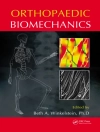Football is probably the most widespread sport in the world: youngsters, adults, women, amateurs, beginners, professionals all make up a legion of practitioners. Lesions associated with football are on the increase and their typology has also changed over the years. Football, like many other sports, has undergone major changes: the increase in the intensity and speed of the game, the modern training methodologies, the technical and tactical innovations are all factors contributing to increased risks of traumatic injury. The footballers, the trainers, the sport’s medical staff are asking for greater information and knowledge on the traumatic lesions associated with this sport. The primary role of those who are concerned with the health of footballers is to enforce preventive measures to reduce wherever possible the risks of trauma.
Зміст
General Concepts.- Epidemiology and Risk Factor.- Aspects of Biomechanics.- Training Methods.- Evaluation of Whole Physical Condition.- Biochemical and Haematological Parameters in Football Players.- Prevention of Football Injuries.- Organisation of a Professional Team’s Medical Staff and the Physician’s Role.- Injuries in Women’s Football.- Referee Lesions.- Future Treatments for Football Injuries.- Specific Injuries.- Maxillo-Facial Traumatology.- Upper Extremity Injuries.- Shoulder Dislocation.- Back Problems.- Muscle Strains.- Tendon Injuries.- Groin Pain.- Meniscal Lesions.- Anterior Cruciate Ligament Injuries.- Anteromedial Knee Instability.- Medial-Side Injury of the Knee.- Posterior Cruciate Ligament Injuries.- Articular Cartilage Lesions in Football Players.- Patellofemoral Problems.- Footballer’s Arthritic Knee.- Leg Fractures.- Malleolar Fractures.- Ankle Ligaments Injuries.- Osteochondral Ankle Defects.- Chronic Footballer’s Ankle.- Foot Problems.- Stress Fractures.- Rehabilitation after Football Injuries.- Return to Play.- Protective Equipment.












